How Two Young Women Quit Their First Jobs to Become Global Leaders in Women’s Education
February 22, 2019 | Filed in: Woman of the Week
In 2009, Tammy Tibbetts — then a web editor at Hearst Digital Media — had the idea to raise money for women’s education through a YouTube video campaign. Christen Brandt, an acquaintance who was a senior at Syracuse University, figured she could help and messaged Tammy on Facebook. It’s a fitting start for a non-profit organization that harnesses social media for a cause. Almost a decade later, She’s the First has provided over 7,200 women and girls with schooling, mentorship, and other tools they need to lead change in their communities around the world. Here’s how Christen and Tammy’s passion project turned into an award-winning nonprofit — and what it was like to meet Michelle Obama.
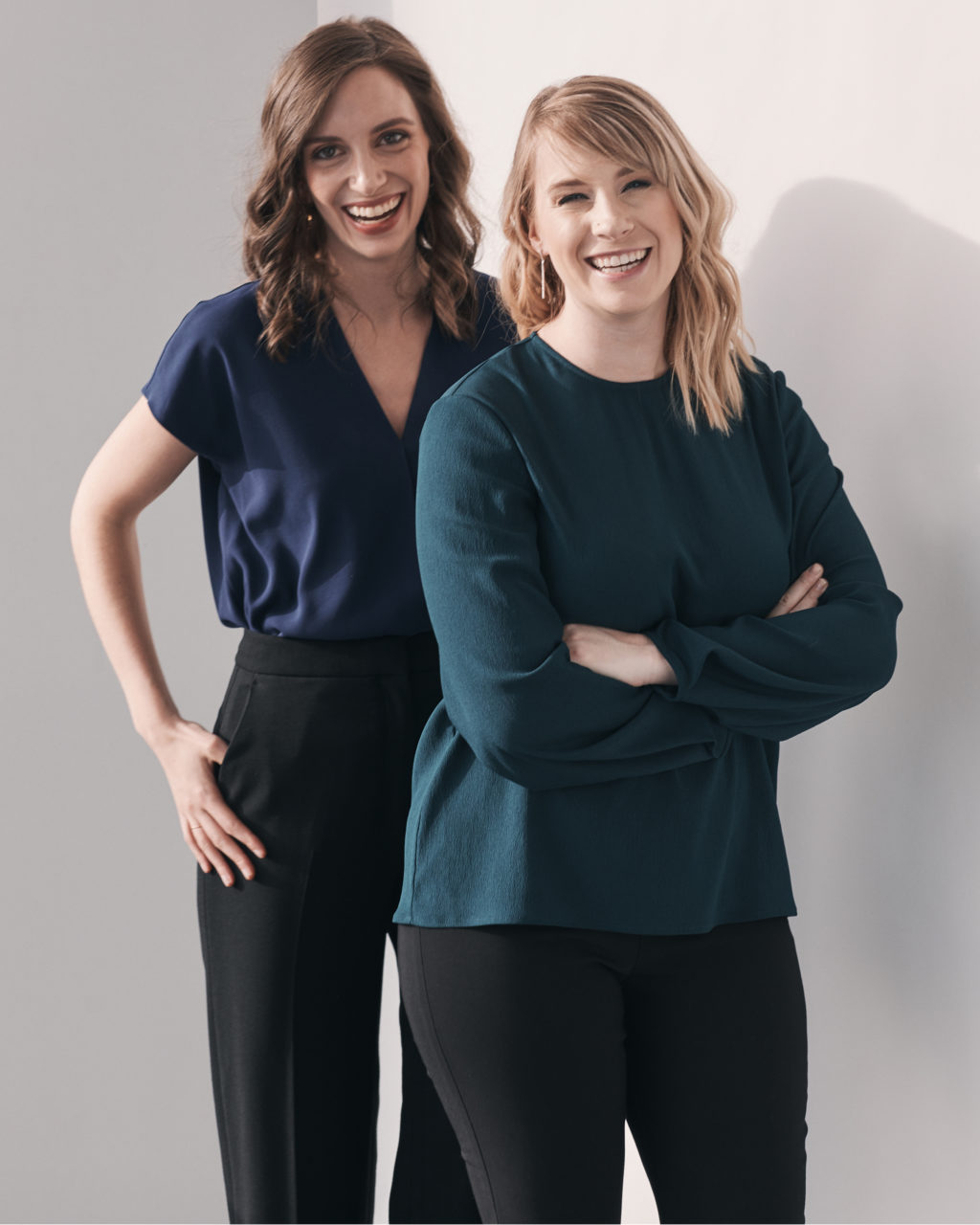
Tammy (left) wears the Antonia top and the Tinsley trouser. Christen (right) wears the Oshima pant, the Carrie top, and the Williamina earrings.
How they met:
Tammy: I’m a few years older than Christen, but we were both recipients of the same scholarship from New York Women in Communications, which offers scholarships to high school seniors and college students who are pursuing careers in media and communications. It provides money for school and access to a support network of women who can mentor and champion you. They also celebrate the scholarship winners at an annual awards ceremony and, after I graduated, I would come back to volunteer there every year. Christen was the winner in 2007, and that’s how I met her.
Christen: At first, Tammy and I were just friends on Facebook, and we didn’t really stay in touch beyond that. I was still in college at Syracuse, studying journalism but also doing a lot of research and reading about poverty alleviation. At the time, there were a lot of studies being published about girls’ education, and how it’s a big part of alleviating world poverty. If half of your population can’t read, then they’re certainly not going to get jobs, or know how to take or administer medicine, for example. Then I saw a Facebook post from Tammy where she wrote about an idea she had to get people our age — college students and young professionals — involved in girls’ education. I sent her a message and we went from there.
On turning She’s the First into a full-time job:
Tammy: Our plan was to use our media communication skills to highlight the issue that millions and millions of girls around the world don’t have access to education. We knew that we couldn’t write big checks, but that we could activate people through online social networks and get them to contribute small amounts of money. We didn’t believe we were founding a whole organization, because we were both set on our careers in the magazine industry. But three years later, our campaign had really picked up and a lot of organizations to which we were directing money were keen to partner with us. We were bringing a new demographic to the cause, as well as stable support. At that point, in 2012, I left my job at Seventeen magazine to become the first full-time employee at She’s the First. Very soon after, Christen left her job at Glamour magazine to become the second employee.
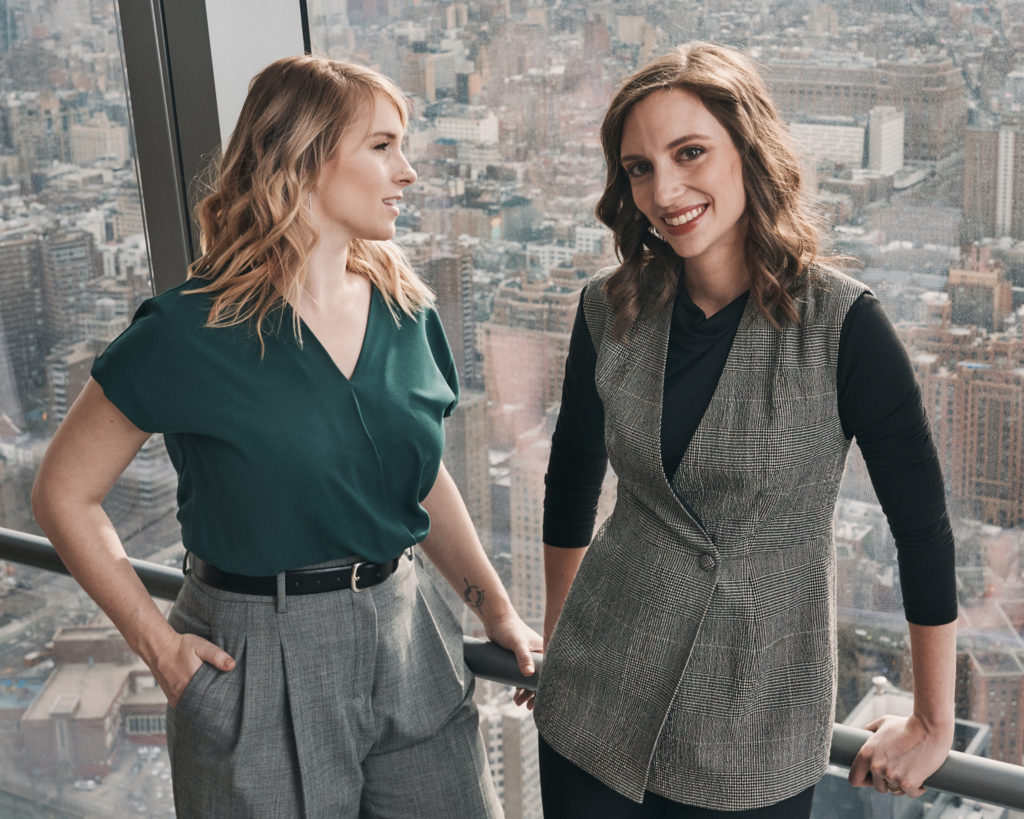
Christen (left) wears the Antonia top, the Costello pant, and the Wide Strap belt. Tammy (right) wears the Winfrey top, the Cassat vest, and the Foster pant.
On quitting their magazine jobs:
Tammy: I was 23 years old when I left my job, and it actually didn’t feel scary. I’d been working for a few years, so I’d saved up some money and established a reputation for myself in the industry. I was the first social media editor at Seventeen, and I got some awards for the work I did there, so I knew I could probably get another job if She’s the First didn’t work out. It felt low risk. Nine years later, looking back, it was one of the easiest decisions I ever made.
Christen: It was an easy decision for me, too. At that point, we were both spending 50 hours a week working on She’s the First and the other 50 hours a week working at our full-time jobs. Continuing that became untenable at a certain point. We hit a place where we either had to go ahead and take that leap to She’s the First full-time, or give it up in order to have some semblance of healthy life balance. Being young was really helpful, because we didn’t have a lot of responsibilities. I had student loans to repay and I didn’t have much savings, but I could live off what I had for six months in a pinch. If we used that six months to get to the point where we could start making salaries and supporting ourselves, then I could do it. And we did.
On seeing past the doubters:
Tammy: I don’t think anyone in my workplace recognized She’s the First as more than a nice little charity project I was doing on the side. Also, the magazine industry is so competitive that no one really expects anyone to leave a good job in it. My palms were definitely sweating when I went into [Seventeen magazine’s then-editor-in-chief] Ann Shoket’s office and told her I was making this decision. But I was so sure of the direction I was going in that nothing could have really swayed me another way.
Christen: I didn’t have anyone tell me I was crazy for doing it, but I did get the reaction of a long pause, silence, and then, “Oh.” My family didn’t really understand what She’s the First was, and for me to leave a steady job in New York to chase after it, they thought I was a little off my rocker. But they knew that there was nothing they would do to talk me out of it anyway. I also found a part-time social media consulting role in New Jersey after I left Glamour, and that helped me support myself until we started salaries.
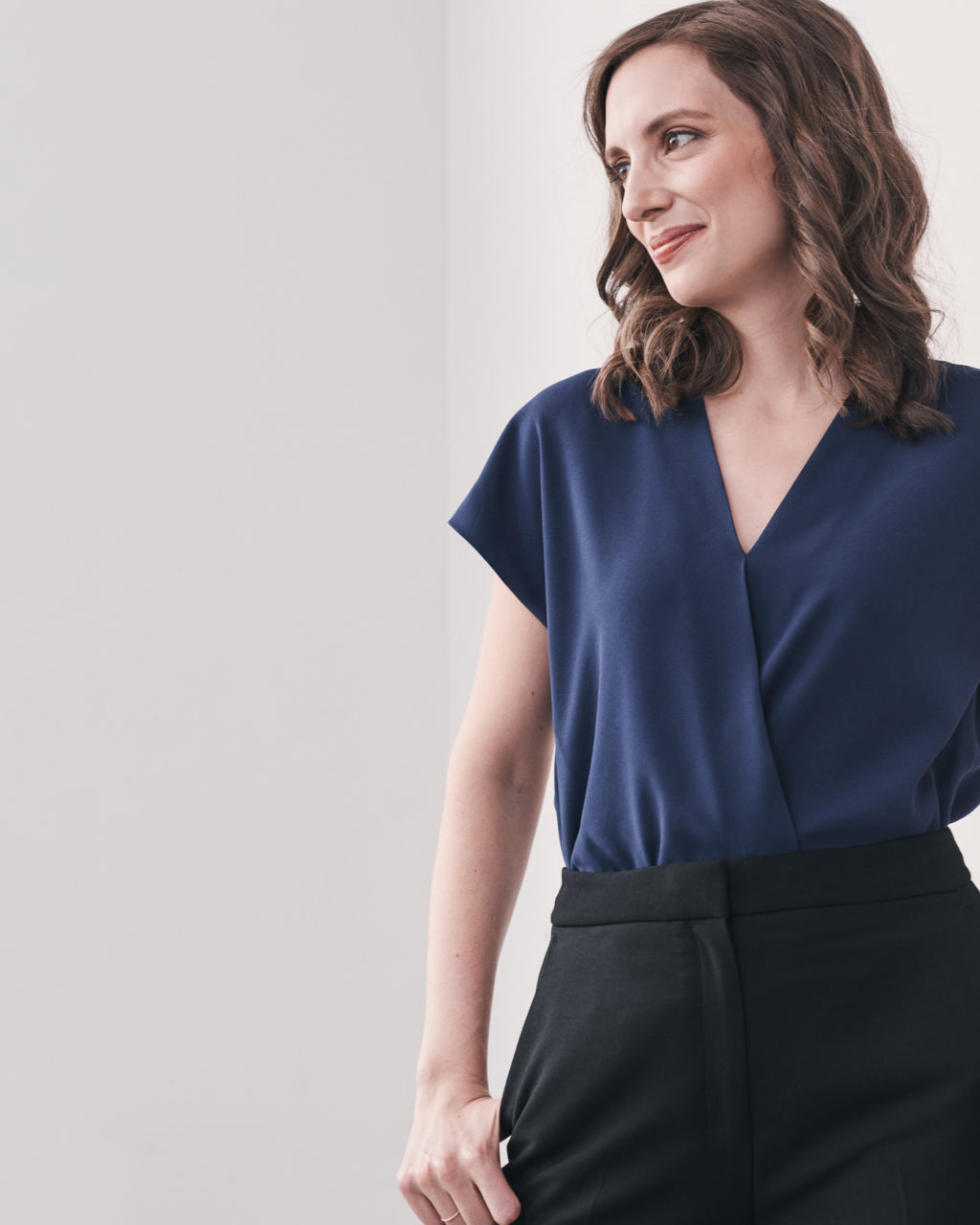
Tammy wears the Antonia top and the Tinsley trouser.
On learning how to fundraise:
Tammy: Raising small amounts of money came pretty naturally to us. We were used to doing Facebook fundraisers, bake sales, and asking people for $20 here and there. That was our strong suit. But fundraising for major gifts and grants that would fund the infrastructure of an organization, that was scary. Our first major funders are Tom Kerns and his wife, Jeanmarie Hargrave. We met Tom through one of our volunteers, who shared a cab with a woman who worked with him. Through that, she was able to make an introduction. We got connected on email, and then we had a meeting with Tom, and we told him about what we were doing. Back then, we would have concert fundraisers in the city, and he came to the concert and made a donation of a few thousand dollars, and it was the largest donation we’d ever received. After the concert, I was like, “Wow, he might be someone who could make an even bigger investment.”
I didn’t know how to make an ask like that, though, so I made a brochure for him. I think I did it on Microsoft Word because we didn’t any other software. So I put together this brochure, asking him to become the first funder of the organization, and I figured if you’re meeting with someone who has wealth, you should pick a fancy hotel lobby. This was in 2012, and I’d heard that the Ace Hotel was really cool. So I set a meeting with him in the lobby of the Ace, but when I walked in, it was so crowded and noisy. I was like, “Oh, no. This is not what I envisioned in this swanky hotel lobby.” But I presented the papers to him and described what we had accomplished and where we wanted to take this, and he said, “Okay, I’m going to take this home and talk to my wife about it.” But later I had found out he already knew that he was committed. It taught me that your passion for something is going to attract people who want to be on your team. Now, I have more polished materials and I know how to be more tactical. But the passion gets you pretty far. You don’t have to be perfect at it, or pick the right meeting spot, or say all the right things. You just have to go for it and show that it’s what you believe in.
On moments of success:
Christen: There have been a lot of moments when I’ve felt like, “Oh my God, we made it!” Getting our first big check was huge. Then, a year later, we were selected to be on a national TV show for nonprofits. One of the most amazing moments came late last year, when we met Michelle Obama as part of the launch of her Global Girls Alliance. One of the She’s the First scholars, Ellie, was able to sit down with Mrs. Obama for more than two hours and share some personal stories and tell her about her goals. Then, when we got to take a photo with Mrs. Obama, we were introduced to her as the founders of She’s the First and she told us how amazing Ellie was and how proud we should be of what we’ve done. Having her tell us that we blew her away is definitely a moment we’re not going to ever forget. But the thing about those moments of external validation is that you’re back to work the next day.
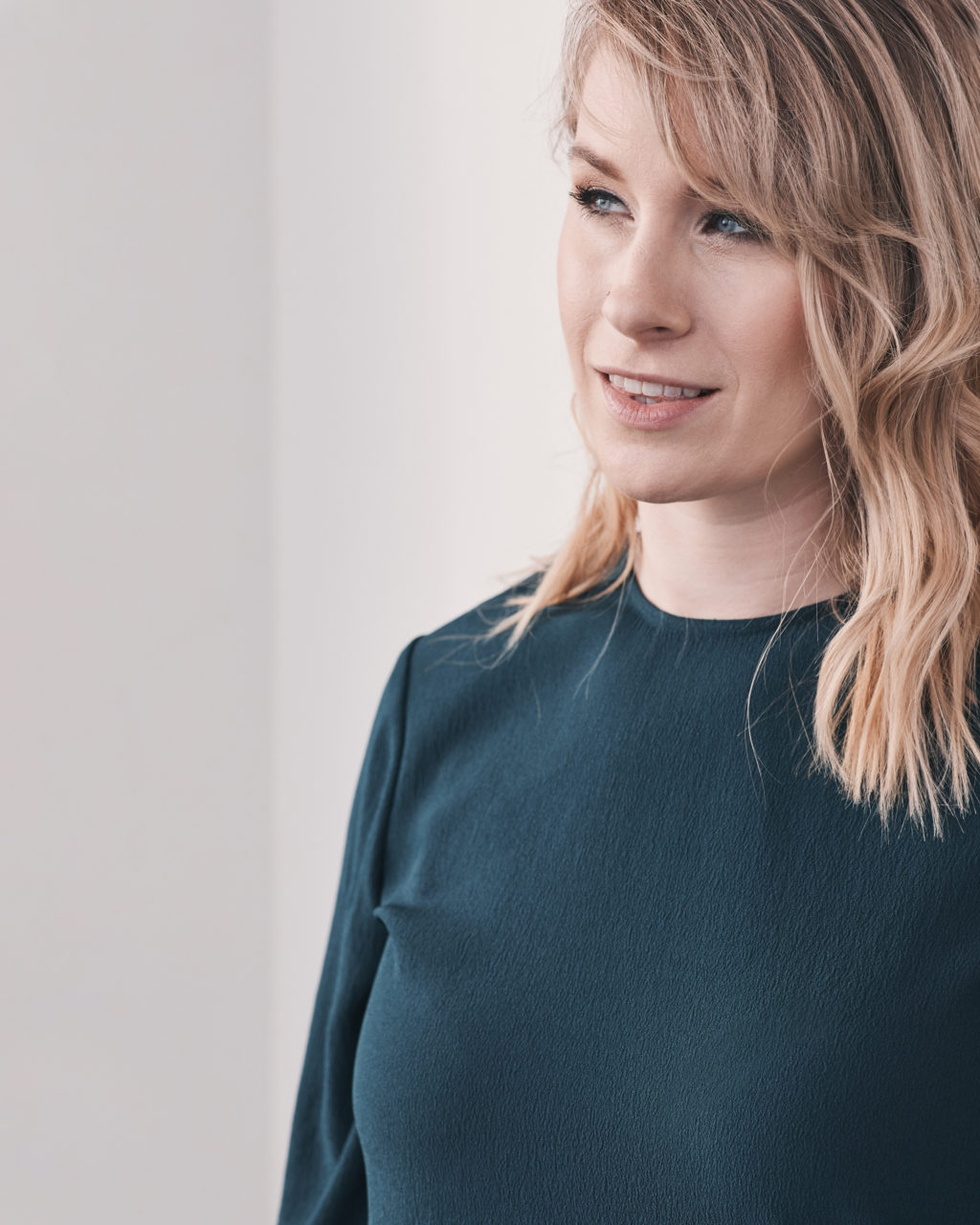
Christen wears the Carrie top.
On figuring out what to pay themselves:
Tammy: In the first two years that we were running the organization full-time, our salaries were based on what we had been making as magazine editors — so, essentially, what we knew we could live on. We hadn’t been very far along in our magazine careers, and magazine editors don’t make a lot of money, so it wasn’t very much. Then we came across a survey of non-profits throughout New York City that showed the average salary amounts of employees, based on their positions and the budget size of the organization. Since then, we’ve been using that chart to dictate not only our salaries, but also the salaries of the rest of the team, as we now have six employees. The survey is published and updated every year, so we update it accordingly because we want our salaries to be competitive. We also want to be fair. There are a lot of start-up founders who justify that they’re going to pay themselves hundreds of thousands of dollars because they’re in charge and they can. We’re constantly balancing the needs of the organization with the fact that we are two talented women who deserve to be compensated for our work.
On leaning into their differences:
Christen: It’s very lucky that Tammy and I happen to have opposite skill sets. That wasn’t intentional when we started She’s the First — in fact, at the time, we thought we had the same skill sets, because we’d been working in the same industry. But as She’s the First developed and we both grew into our respective roles, our differences became more apparent, in a good way. Tammy is very practical and business minded. She’s also excellent at maintaining relationships. We’ll be at an event and we’ll run into someone we haven’t seen in five years, and she can remember that person’s name, the names of their kids, and what kind of dog they have — it’s amazing, and I’d be lost without her in those situations. I’m more focused on strategic programming, and I’m a little more adventurous — I’m often the one who does site visits with our partners. We also handle stress differently. We joke our relationship is what prepared us for our serious romantic relationships. We see a lot of similarities in our partners to each other.
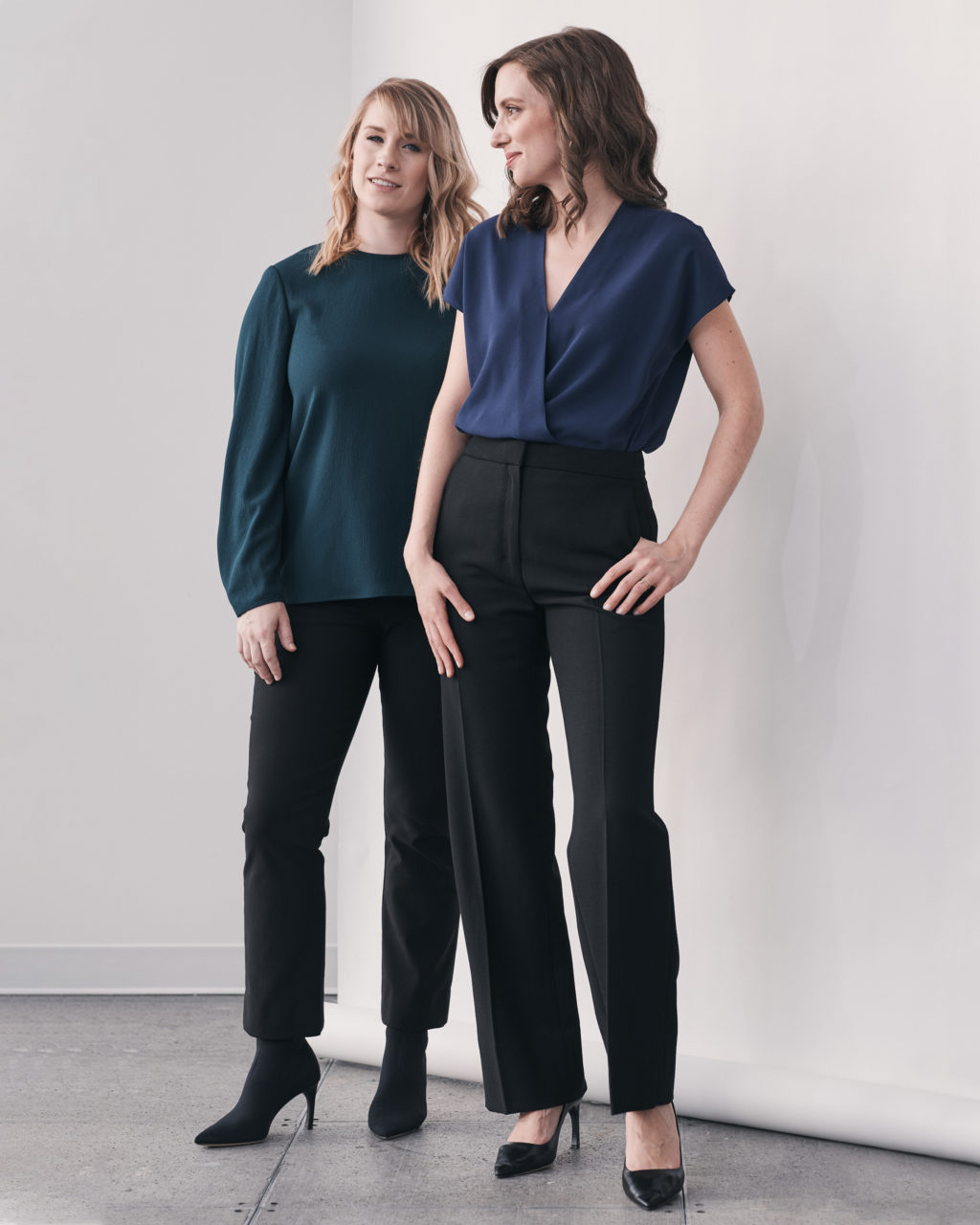
Christen (left) wears the Oshima pant, the Carrie top, and the Lana boot. Tammy (right) wears the Antonia top, the Tinsley trouser, and the Ginger pump.
On dressing for their jobs:
Christen: Tammy has a very polished appearance. It’s part of who she is. For me, I would love to show up to a meeting in ripped jeans and a loose top, but we are young and we’re women, so it’s particularly important when we go into meetings that we project an air of capability. I want my outfit to allow me to be viewed as the confident, competent leader that I am.
Tammy: I once read in a magazine that if you’re taller, you’re more likely to get paid more. So if I have an important meeting, I wear heels. I also tend to wear dresses because it takes less thought in the morning. You just put one piece on. Recently, though, I’ve found myself wearing more pants and blazers. There’s something about wearing pants and a blazer that helps me feel more direct. Especially when I’m talking about money. I love colors. Today I’m wearing a soft pink, but usually I wear red or cobalt blue. Deeper colors make me feel stronger. Also, when I am going into a meeting with a brand or a company, I try to wear the company’s color. I have a theory that it makes people feel subconsciously that they should be working with you.
On making time for time “off”:
Christen: We’ve instituted flexible hours, because I believe in taking the time you need to develop yourself as a human so that can you bring your full self to work. Personally, I find it really important to do exercise during the week. I really enjoy fighting classes, like muay Thai or boxing. And I recently started taking weight-lifting classes, which are fun.
Tammy: Similar to Christen, doing yoga and going to the gym really helps. When I don’t do it, I notice a big difference in my mood and my attitude. Also, my partner is a huge help. It wouldn’t be in my nature to sit down and watch TV on a weekend, but with him, we’ll watch movies and relax and spend time with friends. He’s taught me to take time to recharge. You’re actually growing as a person during that time, too, and finding inspiration that takes you further than if you were just sitting at your computer the whole time.

Tammy (left) wears the Evelyn dress. Christen (right) wears the Hailey dress and the Lana boot.
Photographs by Jeff Allen. Styling by Liz Young. Location: SAP's Leonardo Center at 10 Hudson Yards.





